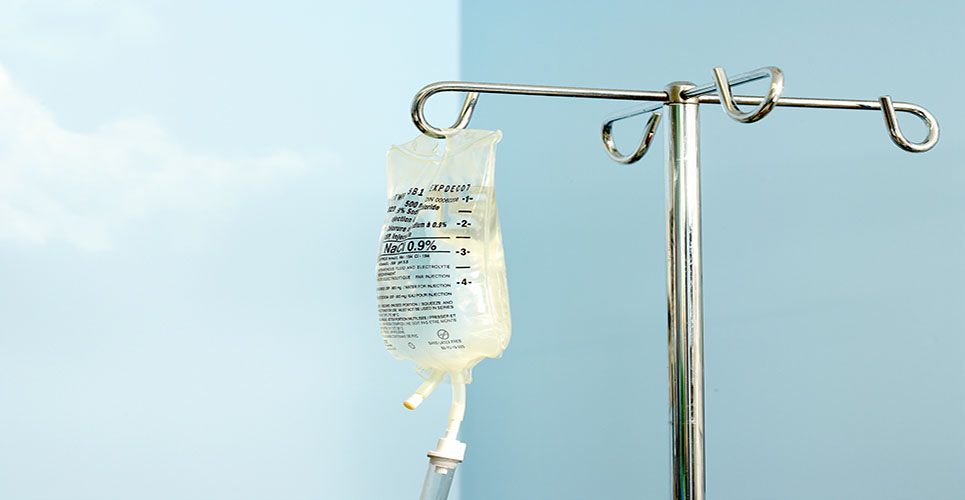From 24th September, patients with a very aggressive form of breast cancer known as HER2-positive, could benefit from a new faster, more efficient delivery method of Herceptin. The subcutaneous (SC) injection, given just beneath the skin, can be completed in 2-5 minutes, compared to the traditional, relatively time-consuming 30-90 minute intravenous (IV) infusion.[5] This speedier form of delivery of Herceptin is now authorised for use in the UK after a licence was granted by the European Medicines Agency (EMA). In addition, NHS England has agreed to fund its use on the NHS.
Patients could now gain up to more than an hour from each visit to the hospital for their anti-cancer therapy and 19 hours over the course of their treatment.[6] This is valuable time and has the potential to liberate patients, enabling them to get on living their lives without the feeling of being shackled to an intravenous infusion. It also means that the relatively invasive central line or cannula would no longer need to be inserted into the patient every three weeks as is the current standard practice. Furthermore, a study has shown that 9 out of 10 patients preferred a subcutaneous version of Herceptin versus IV.[7]
In addition to the advantages to patients, the NHS could profit from savings valued at more than £20m nationally.[1–4] The benefits could be realised through time saved in preparing and administering Herceptin SC and reducing drug wastage compared to IV.[1–4] These savings could go some way to solving the increasing capacity burden the NHS is currently facing in its chemotherapy suites as highlighted in a recent report.[8]
Professor Lesley Fallowfield, Director Sussex Health Outcomes Research & Education in Cancer, University of Sussex said: “Time is precious to women with breast cancer, far too precious to be waiting around in busy chemotherapy centres. If subcutaneous delivery of Herceptin were to replace intravenous administration in the NHS then patients would spend less time in hospital and more time getting on with their lives. If this method is adopted in the NHS then the quality of life of women with HER 2-positive breast cancer could be dramatically improved.”
Dr Mark Verrill, Consultant Medical Oncologist, Freeman Hospital, Newcastle Upon Tyne said: “The licensing of subcutaneous Herceptin is a real boost for patients. Up to now, we have only had an intravenous formulation requiring intravenous access for each 30 minute infusion. Treatment is given every three weeks and typically carries on for a year or more, so overall, it is quite intrusive. We can now give Herceptin by a five minute subcutaneous injection – it’s much quicker and simpler. In a clinical study where women received treatment by both routes, the overwhelming majority preferred subcutaneous Herceptin. As well as the advantage for patients, subcutaneous Herceptin frees capacity on busy chemotherapy day units. It lends itself to administration in the community, resonating with the Cancer Reform Strategy drive for treatment closer to home.”
Herceptin is the standard of care for HER2-positive early-stage breast cancer, based on a number of large trials involving a total of more than 13,000 people.[9–12]
The licence is based on the neoadjuvant HannaH trial which compared Herceptin SC with Herceptin IV given to women with untreated HER2-positive early stage breast cancer, confined to the breast and regional lymph nodes. The study had a positive outcome, showing Herceptin SC to be non-inferior to Herceptin IV, with no new or unexpected safety concerns with the SC formulation.
References
- Roche data on file RXUKDATA00132(1). May 2013
- Roche data on file RXUKDONF00316. June 2013
- Roche data on file Herceptin Subcutaneous Formulation: Cost-Minimization & Budget Impact Model for early-stage breast cancer. October 2012
- Roche data on file. Herceptin Subcutaneous Formulation: Cost-Minimization & Budget Impact Model for metastatic breast cancer. October 2012
- Ismael G et al. Subcutaneous versus intravenous administration of (neo)adjuvant trastuzumab in patients with HER2-positive, clinical stage I-III breast cancer (HannaH study): a phase 3, open-label, multicentre, randomised trial. Lancet Oncol. 2012;13(9):869-78
- Burcombe, R et al. Subcutaneous Trastuzumab (Herceptin®): A UK Time and Motion Study in Comparison with Intravenous Formulation for the Treatment of Patients with HER2-Positive Early Breast Cancer. Advances in Breast Cancer Research, 2013, 2, 133-140
- Pivot, X et al. Patient preference for subcutaneous versus intravenous trastuzumab: Results of the PrefHer study presented at St Gallen (March 2013)
- Hawkes N. The Cancer Capacity Challenge: A report on the unsustainable burden facing NHS resources in chemotherapy suites. January 2013
- Joensuu H et al. Adjuvant docetaxel or vinorelbine with or without Herceptin for breast cancer. N Engl J Med 2006; 354:809-20
- Piccart-Gebhart MJ, Procter M, Leyland-Jones B, Goldhirsch A, et al. Herceptinafter adjuvant chemotherapy in HER2-Positive breast cancer; N Engl J Med 2005; 353:1659-72
- Romond E, Perez EA, Bryant J, et al. Herceptin plus Adjuvant Chemotherapy for Operable HER2-Positive Breast Cancer. N Engl J Med 2005; 353:1673-84.
- Smith I, Procter M, Gelber RD. 2-year follow-up of Herceptinafter adjuvant chemotherapy in HER2-positive breast cancer: a randomised controlled trial. Lancet 2007; 369:29-36

